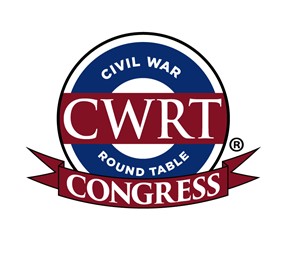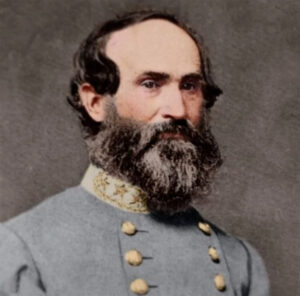CWRT Congress: Creating a Culture of Service
 By Carol VanOrnum, Vice President, Civil War Roundtable Congress
By Carol VanOrnum, Vice President, Civil War Roundtable Congress
Profane, irascible, opinionated. These adjectives were often used to describe Confederate Lt Gen. Jubal Early – not deal-breakers by any means for a leader. Early was a rising star in the Army of Northern Virginia before undertaking the 1864 Shenandoah Valley Campaign. And yet, he lacked qualities that were vital for the successful leadership of his Confederate soldiers and subordinate commanders of the Second Corps. He held his cards close to his chest, sought only his own counsel, rarely seeking the advice of his highly capable Generals on tactics and strategies. He knew what his marching orders required of him, and that wasn’t up for discussion. These were fatal flaws that led to his army’s ultimate failure by the winter of 1864.
If he had been leading a Civil War Round Table in the same manner, the organization would quickly become root-bound and fail.

We all know the types of leaders of Round Tables. The one who does it all, wants control, and won’t share. Then the one who does it all, but doesn’t know how to ask for help until it’s too late and burns out. And the one who appreciates others’ opinions and help from the start, encouraging participation, and clarifying expectations.
Developing a healthy culture of service and inclusion determines your organization’s success.
The Demise of the Dallas CWRT
The Dallas CWRT was established in 1987 by Pax Glenn and a close friend. For many years they enjoyed the Round Table’s fine presentations by notable speakers. Glenn served as president, and with his partner, felt they had a good run. Side by side, they managed the organization which counted about 40 members at its peak.
But several factors began to erode the structure. Glenn’s partner passed away. Members aged out. Their $17 buffet reservations required a guaranteed minimum of thirty. When they couldn’t meet the minimum, Glenn withdrew funds to cover the difference, depleting their account, and they no longer could afford speakers’ travel expenses. Glenn was tired; after all, he’d been president for 45 years! He announced his retirement, and sadly, no one stepped forward to take the helm.
Other Round Tables survive, albeit tenuously, due to a sense of service from the same individuals whose rotation of board positions simulates a version of “musical chairs.” Leaders take on more and more, while the members sit back and enjoy the benefits. One CWRT comes to mind when I hear of all the duties and initiatives, however commendable, that are planned – all by one or two individuals. Leader burnout is right around the corner for them.
I’ve found that sometimes an initiative can be started by one person until it becomes an established activity within the Round Table, making it easier to transfer responsibility. When I learned about Old Baldy’s annual summer picnics, I wanted to try that for our own Round Table. We secured a picnic spot, organized the food, accepted donations, and held a trivia contest. Members enjoyed it. After three years of holding this event, I asked others on the board to take it from my plate. Several people now share the responsibility of planning and execution, and I can move on to other projects.
A Story of One Non-Volunteer’s Transformation
Why is there a lack of motivation? We asked the current past president of the Twin Cities CWRT, Rod Myers, his thoughts. Myers had never volunteered for any position in his ten years of membership. He shared, “I always had a sense of guilt. I’d spent all those years, honestly, sitting there and staring at my shoes, hoping no one was looking at me. I justified it, knowing that I could do it, but waiting for someone else to come forward. I think for most people, including myself, if I could avoid serving and just sit back, be entertained, and pay my dues, I had more freedom and no true responsibility for the organization.”
But Myers did stand up and serve as vice president, president, and past president (in succession per TCCWRT Bylaws). It felt better than he thought it would. His personal pep talk was, “I am responsible, I can do this, I have skills if I get off my, uh, chair.” He realized he had access to a lot of help and support. And most importantly, he realized he wanted this organization to succeed. He enjoyed setting goals, adjusting them, and achieving them. Myers said that he would volunteer again and believes that the best way to get volunteers is to directly ask them.
I’ve come across several Round Tables who advertise for volunteers, with very little success in recruiting them. Whether their “ask” is through a newsletter, a mass emailing, or in pre-meeting slides, the results are the same: ZIP! The Old Baldy CWRT recently sent out an impressive multi-page document, listing every task that needed to be filled. Sadly, their president, Paul Prentiss, wrote in the following newsletter, “I am unhappy to report that no one new volunteered for any of the open administrative tasks. I know we have your moral and financial backing but to stand strong we need a few extra hands to support all of the functions our organization provides to you, our members, and the community. Please reconsider.”
So, while these efforts of publicizing are great, they are, in fact, only an informational tool, lacking in the inspirational tone to convince and inspire anyone to step forward. As Myers stated, it is face-to-face conversations that are going to get you the results you need. John Bamberl, past president of Scottsdale CWRT, adamantly agrees. He shares, “A simple ‘Hey Joe, I think you could handle this. We need you to help out here,’ and they say, “Yes!”
Rich Jankowski, past president of Old Baldy, shared his take. “Talking to members to build a connection and explain the need always generates more success. Listening and understanding the members results in support and commitment to the cause.”
Creating a Culture That Promotes Service
So how do you reverse the trend and create a healthy environment – one in which members want to participate and contribute?
According to Achievers.com1, while leaders are steering the vessel, they need the next tier to buy in to the culture, and in turn, get the general membership to climb on board. Some of their tips include having open communication channels, believing everyone’s opinion matters, cultivating innovation, creativity, and teamwork, and asking for feedback. Show appreciation, listen more and talk less. Create trust. Believe that everyone has a skill or talent. (You can learn a lot about someone from reading a member’s profile created for your newsletter.)

These action items require you to reach out and have a face-to-face conversation. This goes for all leaders in your Round Table. Not just the board, but those ardent volunteers – they’re leaders too, leading by example – to nurture and grow the culture that will enrich your organization.
Start today. When Mike Hoover of the Inland Empire CWRT welcomes a new member, the first conversation he has is to let them know they have an opportunity to be involved in the leadership of the Round Table. He shares how that has worked for them. “This year, our President and Program Director are newer members, less than a year. And they’re both in their forties!”
Creating a culture of service provides joint benefits. As a leader, it alleviates the burden and lightens the load of running an organization. As a member, it’s going to instill ownership among those who have not felt a stake in the organization’s success. And it will unite all toward a common cause.
As Gary Gallagher, editor of Struggle for the Shenandoah: Essays on the 1864 Campaign, compared Phil Sheridan’s versus Early’s leadership skills, ultimately Sheridan’s “capacity to build an army, instill high morale among its soldiers, and inspire troops in battle through superb personal leadership resulted in overwhelming triumph.”2
Carol VanOrnum is vice president of the CWRT Congress and editor of The Light Post and secretary of the Twin Cities CWRT.
1 For more information on ways to create a culture of service, click on the following link. Dewar, Kyla, 15 great ways to create a healthy work environment, 2024, https://www.achievers,com/blog/healthy-work-environment.
2 Gallagher, Gary, Editor, Struggle for the Shenandoah: Essays on the 1864 Campaign (Studies in the Social and Cultural), 1991, Kent State University Press
Very useful information. Thank you.
I would like to add this…..make any new member feel welcome! I drove an hour and joined my closest round table and not one person went out of their way to welcome me or say “hello”. I have never been back.
Point taken (and sure hope it was not the Roanoke (VA) CWRT).
Echoing Mr. Vaughn’s comments, I have had similar experiences with “CWRT culture” over the years … while in the military, I tried several Round Tables in the midwest and east coast as I transferred from place to place … I invariably got impression that the rank-and-file, and often the President, could have cared less if they ever got a new member.
We try to make our members, new and established, feel valued in the TN Valley CWRT (Huntsville, AL). I well remember no one speaking to my husband and me when we first attended . Everyone can do better with this! Great article, Carol.
Great article, Carol. We in the TN Valley CWRT (Huntsville, AL) try to make our members, both new and established, feel valued. I remember well when my husband and I attended our first CWRT meeting and no one spoke to us. We can all do better with this!